During the Great Depression of the 1930’s people were unaware of multi-vitamins as a way to boost the immune system. In fact, most people weren’t even aware of what an immune system was, let alone how to support one. Fortunately, many of the foods that were cheap and available provided significant nutrients that not only satisfied basic nutritional needs but actually boosted the immune system.
Most of the foods fell into the category of fruits, vegetables and legumes or beans and peas for protein. Meat was an occasional treat and typically appeared on the plate as sausages and especially hot dogs or a small amount of meat that someone could afford and was blended into other ingredients in a recipe.
Some of these foods were bought at markets, but people also did a significant amount of foraging in their neighborhoods or backyards. Speaking of backyards, almost every yard had a garden where people grew carrots, onions, garlic, potatoes, tomatoes and herbs. The result of any harvest was often a soup or stew that was simmered all day and served across every meal.
Bread was another staple because the flour and yeast were still inexpensive and the recipes were simple. The bread was often topped with jams or jellies made from various fruits either purchased or picked from a garden or park. Butter occasionally made it to the table as well as milk.
Ultimately, it was the creativity of home cooks and the ability to both find and combine ingredients that gave folks during the depression a fighting chance when it came to boosting their immune systems.
Common Depression Era Foods That Supported Immunity
Legumes
Beans and peas define legumes, and they were often grown on vines crawling up fences and trellises. They were a primary source of protein, fiber and minerals. They were used across a variety of recipes from soups to stews and even in breads.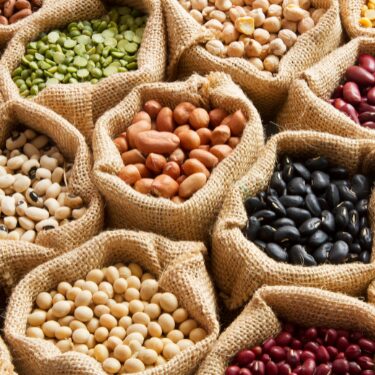
Eggs, Milk and Butter
Eggs were always available and a cheap source of protein. Milk, butter and cheese were at times a luxury but when available provided Vitamin D and calcium.
Fruits and Vegetables
A fruit tree in the backyard was a prize and many people depended on their gardens. Strawberries were commonly grown along with various berries, melons and onions, carrots, potatoes, cabbages, cauliflower and tomatoes were staples in any garden. Citrus fruits like oranges were a treat and nothing went to waste including the peels which were turned into candied orange peels. The fruits and vegetables were an excellent source of Vitamin C and minerals plus fiber. On a side note, the outer leaf of cauliflower has more calcium than a glass of milk.
Whole Grains
Rolled oats, cornmeal and flour were staples of most recipes and made everything from cereals to breads to cookies. They were a great source of B vitamins, fiber and protein.
Canned Foods
Many canned foods were also inexpensive, and home canning was a regular practice. Vegetables and fruits were the most common canned goods providing vitamins across the year.
>>> Beans and Rice Survival Soup That Can Last Up To 10 Years <<<
Foraged Foods
Foraging was a common practice and any casual walk in the park or the yard had people on the lookout for wild, edible plants. Dandelion was very popular in addition to plantain leaves, purslane, clover and even baby maple and oak leaves. Many of these plants had nutrient values that exceed kale and spinach.
Medicinal Remedies
Many people were aware of the medicinal value of many plants especially herbs. That’s why an herb garden was often a part of any backyard garden for both culinary and medicinal use. Garlic and onions were another immune booster and were a standard addition to many recipes.
Common Depression Era Recipes That Boosted the Immune System
We’re going to cover a range of recipes that fall into the category of immune boosters and finish with the champ that kept a generation alive. All of the ingredients were simple, affordable and available. Salt and pepper were the common seasoning ingredients although herbs often added flavor.
Oatmeal
Oatmeal was inexpensive and was the most popular breakfast food. Sometimes it was topped with fruit if it was available. The recipe was simple and made with oatmeal and water. It was often topped with sugar, honey or syrup and topped with the fruit of the day.
Bread and Jam or Jelly
Fresh baked bread was both a treat and a necessity. The basic recipe combined 2 ½ cups of flour with a cup of water and a teaspoon of yeast. The dough was kneaded and allowed to rise for an hour and baked at 350 degrees F. (176 C.) for 35 minutes.
Jam and jellies also were a common topping and a breakfast of oatmeal and jelly on bread got everyone off to a good start. The bread provided varying levels of protein, fiber and carbohydrates for energy and the fruits in the jams and jellies were an excellent source of Vitamin C.
Dandelion Salad
Dandelions were a unique nutritional gift, and they commonly grew everywhere from the countryside to the cities. They are nutrient-dense and high in minerals, Vitamin C and fiber. The salad dressing was usually a mix of vinegar and oil with a splash of water. Cheese would top the salad as a treat if it was available providing calcium.
Vegetable Soup
People during the depression would often have a pot of soup simmering on the stove all day. Meat bones from any cut of meat were often added to enrich the stock and the vegetables in the soup depended on what was available from the market or garden. Salt and pepper were the most common seasoning plus any herbs or sliced green onions to enhance the flavor. Bread was typically served with the soup.
If you want your soup to do more than just fill you up, adding adaptogenic mushroom powders is one of the simplest ways to give your body a real advantage.
Just a scoop of reishi, cordyceps, or turkey tail during cooking doesn’t simply add flavor. It boosts your immune system, helps your body manage stress, and supports overall balance and resilience. This is a small change with a huge impact, and it gives your body the tools it needs to stay strong, healthy, and energized every single day. If you’re serious about supporting your health, keeping these adaptogenic powders on hand isn’t optional. It’s essential.
The problem is that buying each one individually can get expensive fast. Reishi alone can cost $25–$30, and by the time you add the rest, you could easily be spending over $250. I know, times are though, and every dollar counts these days, so this is probably not what you want to hear right now.
So I want to share with you a solution that makes it way more simple and affordable. I discovered this bundle some time ago that gives you all four adaptogenic mushrooms in highly concentrated form. Just 1–2 drops in soups, teas, or coffee is enough to get a full dose of immune-boosting, stress-fighting, and focus-enhancing benefits. That means one single bundle will last you months with daily use, saving you hundreds compared to buying each mushroom separately, while giving you an effortless, long-term way to supercharge your health without running out or overspending. Here is the link of where I got it from (but hurry up, because supplies are limited and these bundles tend to sell out quickly..)
Stuffed Cabbage Rolls
Stuffed cabbage leaves made a regular appearance on depression era tables. Rice was a common stuffing, and other ingredients were added including carrots, onions, celery and even the smallest cut of meat could be chopped and blended into the mix. Salt and pepper were the primary seasoning and the stuffed cabbage leaves were often cooked in a covered pot of water with potatoes lining the bottom of the pot. The cabbage leaves had probiotic benefits, and the fillings provided a range of vitamins and minerals.
Sausages and Sauerkraut
Sausages were cheap during the depression, especially hot dogs. A common diner was a couple of sausages with a side of sauerkraut. The sauerkraut provided probiotic benefits and the sausages, or hot dogs provided protein.
Hoover Stew
Hoover stew was the hero for nutrition and immune support during the depression. It was named after Herbert Hoover, who was often blamed for the depression. It provided excellent nutrition across protein, vitamins, minerals and micronutrients. It was often served with bread on the side and emerged as the ultimate survival food in the 1930’s.
Ingredients:
- 16 ounces of macaroni or your favorite pasta
- 2 cans crushed tomatoes (15 to 16 ounces)
- 1 can sweet corn (15 to 16 ounces)
- 1 can pinto beans (15 to 16 ounces)
- 1 pack hot dogs (16 ounces)
- 1 tsp dried Italian herbs
- 1 Tbsp garlic, diced
Directions:
(Serves 6)
- Cook the macaroni according to the directions. Rinse, drain, and then return to the pot.
- While the macaroni is cooking, slice your hot dogs.
- Add the hot dogs, tomatoes, corn (with liquid), and beans (rinsed and drained) to a saucepan and simmer.
- Add any seasons you desire to the saucepan. Cook until thoroughly heated.
- Add your hotdog mixture to the pasta and stir well.
(Bonus) Candied Orange Peels
Oranges were an occasional treat but prized by many depression era families.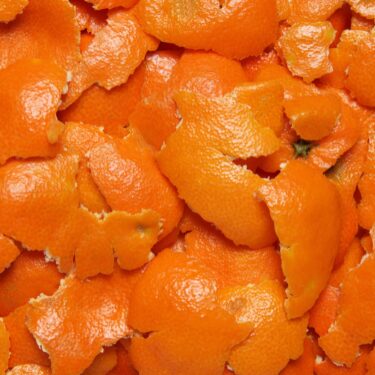
In the spirit of the times, nothing was wasted and that included the orange peels. The result was candied orange peels which were a sweet treat everyone in the family looked forward to. They were also an excellent source of Vitamin C.
Ingredients:
- Oranges
- 3 cups of white sugar
- 3 cups of water
Directions:
- Cut the peels on each orange into 4 vertical segments.
- Cut into 1/4-inch-wide strips.
- Cook the peels in a large pot of boiling water 15 minutes; drain and rinse.
- Bring 3 cups of sugar and 3 cups of water to boil in a medium saucepan over medium heat, stirring to dissolve sugar. Add the peels.
Return to a boil. Reduce the heat; simmer until the peel is very soft, about 45 minutes. Drain.
- Sprinkle sugar onto a sheet of parchment paper and toss the peel while sprinkling another cup of sugar over the top. Toss the peels and transfer to a plate to dry. Let the sugared orange peels rest until the coating is dry, 1 to 2 days.
- You can wrap and freeze for up to 2 months.
Regular Meals Were the Key
In spite of the limitations, lack of availability and the forced frugality of the depression, the ability to eat meals on a regular basis was often a primary factor to maintain a healthy immune system and overall health. The creativity of the cooks and the ability to grow, forage and find food solutions made all the difference. It’s a good lesson from the past that we should all remember and it may help us again someday in the future.
The Wild Plant That People Fought Over During The Great Depression (Video)
Signs We’ll Soon Be Eating Depression-Era Foods
How to Make Depression-Era Potato Cakes
11 Household Items You Need To Stock Up On Before The Upcoming Great Depression


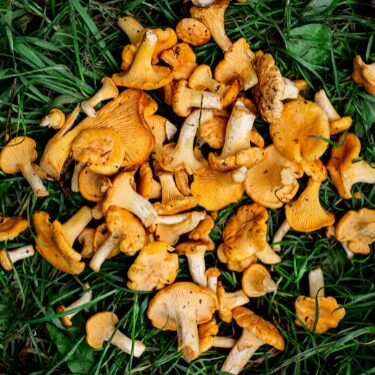

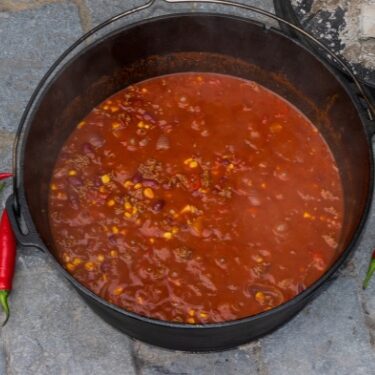



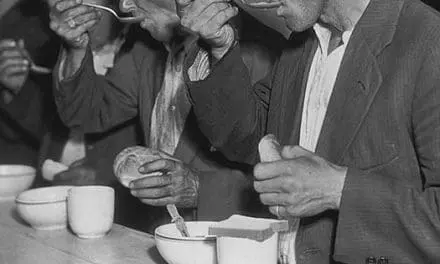
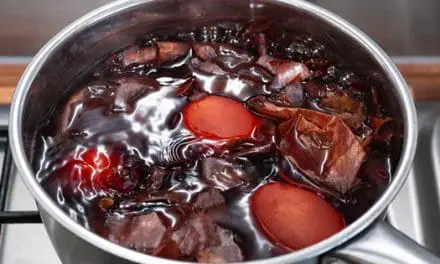


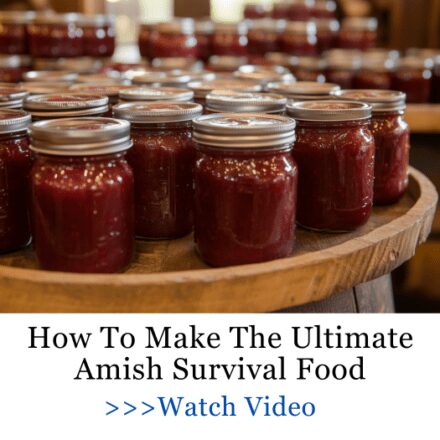





So, the link to the Mushroom Fourtress w/all 4 mushrooms recommends a serving size of 40 drops (EACH) per day? Your post says 1-2 drops in soups? Disconnect or am I missing something?
The link also says 1-2 drops. Where did you see 40 drops?
The bottles themselves say use 40 drops or 1 dropper full for one serving.